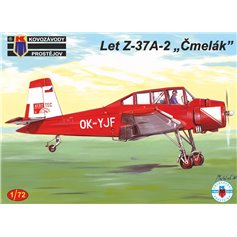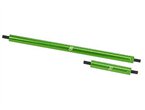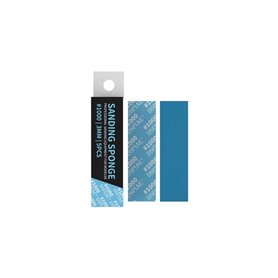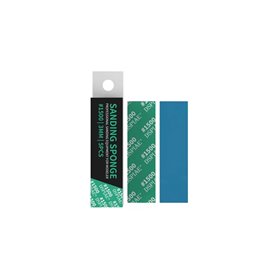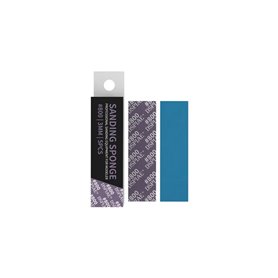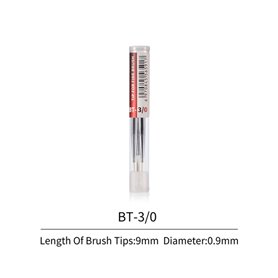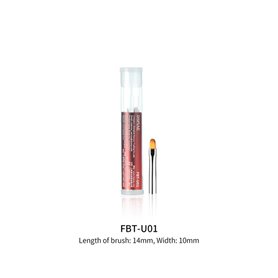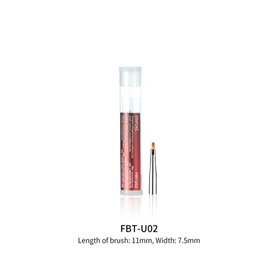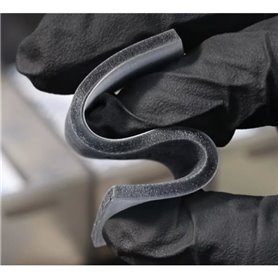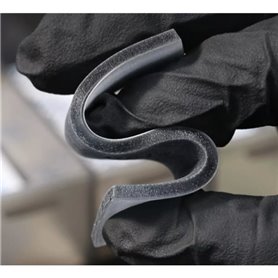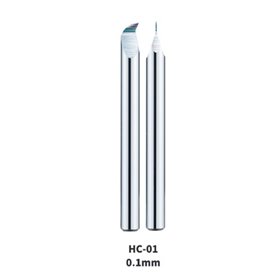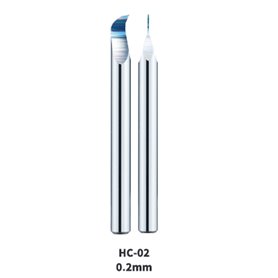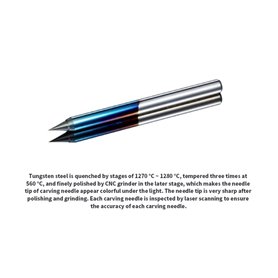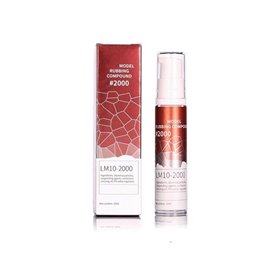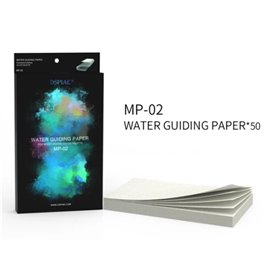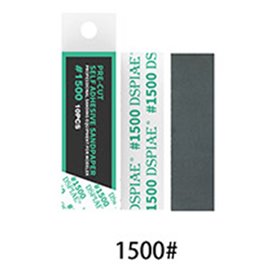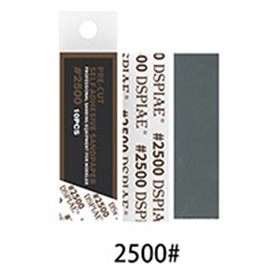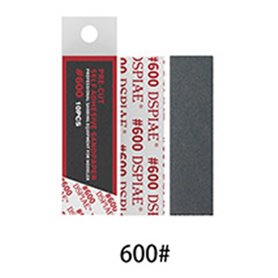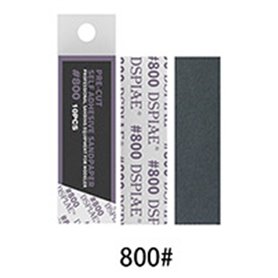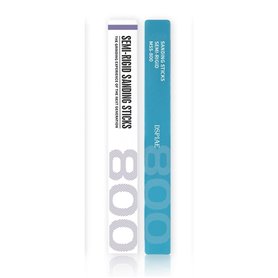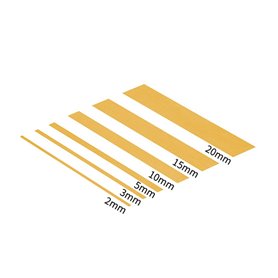Modeling Brushes
Choosing the right painting tools is a key element for achieving a precise and professional finish on any model. In this category, you will find modeling paint brushes designed for various techniques and types of paint. We offer brushes ideal for applying acrylic, oil, or enamel paints, as well as for creating intricate designs, weathering effects, and painting larger surfaces. Each brush features a solid construction – an ergonomic, well-balanced handle for a secure grip and high-quality bristles that do not shed and allow for a smooth paint application. Whether you are a beginner or an experienced modeler, you will find tools here tailored to your needs.
Which Modeling Brushes Should You Choose?
The choice of the right brush depends on the task you want to perform. Our offer includes models with natural bristles, ideal for oil paints and shading techniques, and synthetic bristles, which are perfect for acrylic paints due to their resilience and ease of cleaning. We offer brushes in various shapes: round for painting precise details, lines, and small elements; flat for covering larger, uniform surfaces like vehicle hulls or building walls; and angled, which make it easier to paint in hard-to-reach places and are excellent for the drybrush technique. We also offer specialized silicone brushes for applying masks or putty, as well as complete sets that are a great start for beginner modelers. Proper brush care, including regular cleaning and storage, will significantly extend their lifespan.
Cutting Tools
Precision cutting is the foundation of every modeler's work. The right cutting tools allow for the clean and accurate separation of parts from sprues, removal of flash, and modification of model components. It's hard to imagine assembling any model—whether it's a plane, a tank, or a figurine—without them. In this category, we've gathered all the essential instruments to make the process easier for both beginners and experienced enthusiasts. A pair of high-quality nippers and a sharp hobby knife are the absolute basics you should start with when equipping your workshop.
Types of Cutting Tools in Model Making
The most fundamental tool is the side cutter, also known as nippers, used for clipping parts from sprues. It's worth paying attention to single-blade models, which ensure an exceptionally smooth cut and minimize the risk of damaging the detail. The second key item is the hobby knife, often called a scalpel. It is used for precisely removing gate marks, scribing panel lines, or trimming small parts. The availability of interchangeable blades in various shapes allows you to tailor the tool to a specific task. An indispensable accessory is a cutting mat, which protects your work surface and extends the life of your blades. For more demanding tasks, model saws are useful, ideal for cutting thicker plastic or resin elements. Our range also includes precision scissors, which are invaluable when working with decals or masking tapes.How to Choose the Right Cutting Tools?
The choice of tools depends on your skill level and the specific nature of your projects. Beginners should primarily equip themselves with a solid pair of nippers and a hobby knife with a supply of spare blades. This set is sufficient for building most standard plastic models. As you gain experience, it's worth expanding your arsenal with specialized instruments, such as scribers for restoring panel lines or saws with various tooth gradations. Please remember that all cutting tools are very sharp and require careful handling during use. Our store offers a wide selection of products from renowned brands that guarantee precision, durability, and safe operation. Abrasives & Polishing
In scale modeling, as in many other precision crafts, the devil is in the details. Proper preparation of the model's surface before painting is crucial for achieving a professional finish. This is precisely where abrasives and polishing materials come into play. They allow for the removal of imperfections such as mold seam lines, plastic flash, or glue marks. Thanks to them, you can also perfectly smooth out modeling putty, preparing a smooth and uniform base for painting. Using the right tools at this stage helps prevent many problems during painting and ensures that the final appearance of the model is satisfying.
Types of Abrasives in Scale Modeling
A fundamental tool for every modeler is sandpaper. Available in sheets or on sponges, its key parameter is the grit – the higher the number, the finer the grain and the smoother the surface after sanding. For working with plastic, wet-and-dry sandpaper is particularly recommended, as wet sanding minimizes dust and prevents clogging. For working on curved and hard-to-reach surfaces, flexible sanding sponges and sanding sticks are ideal. In turn, for removing larger amounts of material or for precise shaping of parts, modeling files with various shapes and coarseness are indispensable.Polishing and Final Finishing of the Model
After finishing with fine-grit sandpaper, it's time for polishing. This process aims to achieve a perfectly smooth, or even a mirror-like, surface. This is especially important for clear parts, such as aircraft canopies or windows in car models, as well as for car models where the bodywork is meant to shine. For this purpose, specialized polishing compounds with varying abrasive strengths are used. They are applied with a soft cloth, gradually moving from a coarser compound to the finest, finishing one. The result is a flawlessly smooth surface that readily accepts decals and clear coats. Tweezers
Modeling Tweezers – Precision in Every Grip
Modeling tweezers are one of the most basic and essential tools in any modeler's workshop. They allow for the precise gripping, holding, and placement of even the smallest model components, which are impossible to handle with fingers or risk being damaged. Unlike standard cosmetic tweezers, those designed for modeling feature much finer and more precisely shaped tips, which is crucial when working with tiny photo-etched parts, decals, or cockpit interior elements in aircraft models.
Types and Applications of Modeling Tweezers
There are various types of tweezers available on the market, each tailored for specific tasks. The most common distinction is between straight and angled tweezers. Straight tweezers are versatile and perform well in most tasks, providing a secure grip. In contrast, angled (curved) tweezers facilitate work in hard-to-reach areas and allow for precise placement of details without obstructing your line of sight. Another interesting option is self-locking (reverse-action) tweezers, which hold a part when you release pressure. This is an ideal solution for holding components during gluing or painting, as it frees up your hands. It's a good idea to have a set of several different tweezers to be prepared for any situation.
When choosing tweezers, pay attention to the material they are made from – most commonly stainless steel, which guarantees durability and resistance to corrosion. A good pair of tweezers is a small investment that significantly enhances comfort and precision, directly impacting the final appearance of your model. It's a tool without which professional and satisfying model building is hard to imagine.
Workshop Equipment
A well-organized workspace is the foundation of model making. Proper workshop equipment is not just a matter of convenience, but also of efficiency and safety. It helps maintain order, protects furniture from damage, and ensures all necessary accessories are always within reach. In this category, we have gathered products that will help you create a functional and comfortable workstation, whether you are just starting your modeling adventure or are already an experienced creator.
The Foundation of Every Workshop: Mats and Lighting
A key piece of equipment is the cutting mat, often called a self-healing mat. It protects your desk surface from scratches and cuts made while working with a hobby knife. The printed grids, angles, and lines facilitate the precise cutting of parts. Proper lighting is equally important. Working with small details requires good visibility, which a dedicated modeling lamp can provide. Many models are equipped with a magnifying glass, which is an invaluable aid for painting figures, assembling photo-etched parts, or applying decals. Good, neutral-colored light prevents eye strain and allows for accurate color assessment.
Order and Stability: Organizers and Holders
Keeping modeling tools and chemicals in order can be a challenge. Various types of organizers and racks come to the rescue. Special paint racks allow for convenient storage of paint pots, preventing them from tipping over and making it easy to quickly find the color you need. Organizers for tools such as brushes, files, or nippers ensure that everything has its designated place. It's also worth noting assembly holders, so-called "helping hands," and modeling vises. They allow for stable mounting of glued or painted parts, leaving both hands free for precise work.
Cutting Mats
A cutting mat is an essential tool in any modeler's workshop, for both beginners and advanced hobbyists. Its primary function is to protect your work surface—be it a desk or a table—from mechanical damage such as knife cuts, scratches, or stains from glue and paint. A key feature of professional modeling mats is their self-healing property. This means that after a cut is made, the special material of the mat reseals itself, which significantly extends its lifespan and keeps the surface smooth for longer. Most mats also feature a printed grid with centimeter and inch scales, as well as angle guide lines, providing an invaluable aid for precise cutting of parts.
How to Choose the Right Cutting Mat?
The choice of a mat depends mainly on your individual needs, the size of your projects, and the available space in your workshop. The most popular sizes are A4, A3, and A2. An A4 mat is compact and ideal for small jobs or when you have limited space. The A3 size is considered the most versatile—it provides a comfortable work area for most models in popular scales without taking up the entire desk. A2 and larger mats are designed for modelers working on large projects, such as dioramas or ship models. It's also worth paying attention to the mat's thickness—the thicker it is, the more durable it generally is. Some models are double-sided, offering different colors or grids on each side, which can be an added advantage.Caring for Your Modeling Mat
To ensure your mat lasts as long as possible, you need to care for it properly. First and foremost, always store your mat flat. Rolling it up or leaning it against a wall can cause permanent warping. Avoid exposing it to direct sunlight or keeping it near heat sources like radiators, as this could cause it to bend. For cleaning, a damp cloth with a bit of mild detergent is sufficient. Also, try not to cut in the same spot repeatedly; distribute your cuts across the entire surface to ensure it wears down evenly. By following these simple rules, your cutting mat will remain a reliable tool for years to come. Masking Tapes
Masking Tapes – A Precise and Essential Tool for Modelers
Masking tapes are an indispensable accessory in the world of scale modeling, allowing for the precise separation of sections painted in different colors. They are crucial for achieving clean, sharp lines and precise transitions between paint colors. By using them, you can create professional-looking models without the risk of damaging your work during painting and tape removal.
Types of Masking Tapes
Depending on the surface type and the complexity of the model being painted, there are two main types of masking tapes:
- Flexible Masking Tapes – Designed for painting parts with irregular shapes. Their flexibility allows them to be easily applied along curves, making them an ideal tool for more advanced modeling projects.
- Standard Masking Tapes – Intended for masking flat surfaces. They ensure precise, sharp lines, perfect for simple geometric shapes.
Masking tapes are designed not to lift previously applied paint, provided the paint is completely cured and the primer was applied correctly. They do not leave any adhesive residue, which is crucial for maintaining the aesthetics of the finished model.

Benefits of Using Masking Tapes in Scale Modeling
- Precise Color Separation – Masking tapes allow for the precise separation of surfaces painted with different colors, which is key to achieving professional results.
- Easy to Remove – Once painting is complete, the tapes can be easily removed without risking damage to the previously applied paint layer.
- Reusable – In some cases, cut pieces of tape can be used again. However, keep in mind that the adhesive strength may be weaker after the first use, which can be advantageous when you need gentler adhesion.
Product Types in the Masking Tapes Category
In our selection, you'll find various types of masking tapes, tailored to the needs of every modeler:
- Paper Tapes – Ideal for precisely masking straight lines. Easy to cut with a hobby knife, they ensure a clean and sharp color separation on flat surfaces. Paper tapes are typically yellow.
- Flexible Tapes – Made from plastic/vinyl (white) or a flexible non-woven fabric (blue), they allow for application along curves and masking irregularly shaped elements. They are often used in more complex projects where smooth lines and precise curves are required.
- Masking Sheets – Self-adhesive paper sheets for masking large areas. Perfect for covering larger sections of a model that do not require painting.
How to Use Masking Tapes?
Using masking tapes is simple, but it's worth remembering a few key rules:
- Before applying the tape, make sure the paint on the model is completely cured to avoid damaging it upon removal.
- For a gentler adhesion (to reduce tack), first stick the tape to a clean surface (e.g., your hand or a cutting mat) before applying it to the model.
- After painting, peel the tape off slowly and at an angle to achieve a clean, sharp line.
Hand Drills
Precision in Your Hands – Hand Drills for Models
Hand drills, also known as modeling or precision drills, are an essential tool in every modeler's workshop. Unlike their electric counterparts, they offer complete control over the drilling process, which is crucial when working with delicate components. They allow for the creation of precise, small-diameter holes in materials such as plastic, resin, soft wood, or thin photo-etched parts. Thanks to manual operation, they eliminate the risk of damaging or melting the material due to excessive speed, a common issue with power tools. They are quiet, require no power, and can be used anywhere.
Applications of Hand Drills in Model Making
The primary function of a hand drill is to create mounting holes and fine details. They are perfect for drilling out the barrels of machine guns and cannons on models of armored vehicles or aircraft, significantly enhancing the miniature's realism. They are used to prepare holes for mounting antennas, railings, or masts on ship models. They are indispensable for the "pinning" technique, which involves reinforcing glued joints with metal rods—the drill allows for the precise creation of holes for these reinforcements. They can also be used to easily remove ejector pin marks or prepare spots for mounting additional parts.
How to Choose a Modeling Hand Drill?
When choosing a hand drill, it's important to consider several features. The most critical is the drill bit holder—collet chucks are the most common, allowing for the mounting of drill bits of various diameters, which ensures great versatility. An ergonomic, often rotating handle facilitates work and increases comfort. Many drills are sold in sets with a collection of micro-drills, with diameters ranging from 0.3 mm to as large as 3.0 mm, making them an ideal starting point. It's wise to ensure that the clamping mechanism is sturdy and provides a stable grip on even the thinnest drill bits.
Drill Bits
Drill bits are one of the fundamental tools in every modeler's workshop. Their role isn't limited to just making holes. They are precision accessories that allow for modifying parts, adding details like gun barrels, antennas, or rigging, and preparing components for reinforcement with metal pins. Choosing the correct drill bit diameter is crucial for achieving a realistic and clean effect without damaging the delicate parts of the model.
What Modeling Drill Bits to Choose?
The primary tool is a hand drill, often called a "pin vise," which provides maximum control over the drilling process and minimizes the risk of damaging plastic. It is used with sets of drill bits in various diameters, most commonly ranging from 0.3 mm to about 3 mm. For more advanced work or for handling harder materials like resin or white metal, electric mini drills can be useful. However, they require more skill, as their high rotational speed can easily melt plastic. It's best to choose drill bits made from high-speed steel (HSS), which are known for their durability and sharpness.Applications of Drill Bits in Modeling
Modeling drill bits are used for many tasks. They can be used to drill out the barrels of cannons and guns on aircraft or armored vehicle models, which significantly enhances their realism. They are essential for creating mounting holes for antennas, masts, rigging lines on ship models, or railings. They are also used to prepare parts for "pinning"—joining components with pieces of metal wire—which ensures a sturdy construction, especially for resin models. Whether you are working with plastic, resin, wood, or photo-etched parts, you will find the right drill bit for your project in this category. Modeling Power Tools
What Are Power Tools for Modeling?
Power tools for modeling are an essential part of any advanced modeler's workshop. While many tasks can be accomplished with hand tools, using their electric counterparts significantly speeds up the process, enhances precision, and enables you to work with harder materials like metal and dense plastics. Our selection features tools specifically designed for model making—characterized by their compact size, low weight, and precise speed control, which is crucial for handling delicate details. With these tools, tasks such as drilling miniature holes, grinding weld seams on tank models, or cutting structural components become easier and deliver superior final results.
Types and Uses of Power Tools in Modeling
The cornerstone of this category is the rotary tool (often referred to by the brand name 'Dremel'). Thanks to a wide range of interchangeable attachments, it can function as a drill, sander, router, polisher, or mini-saw. It's an incredibly versatile tool, perfect for anyone starting with power tools. For modelers who specialize in scratch-building, specialized table saws and circular saws are invaluable for making precise, angled cuts in wood, plywood, or plastic. Our range also includes precision drill presses for creating perfectly perpendicular holes, and engravers for easily scribing details like panel lines on aircraft models.
How to Choose the Right Tools for You?
When selecting power tools, consider a few key factors. First, the power source. Most modeling tools run on low voltage (e.g., 12V) and require a dedicated power supply with speed control. Second, power and rotational speed (RPM). Lower-power tools are sufficient for delicate plastic work, while more powerful models are necessary for metal. Ergonomics are also crucial—the tool should feel comfortable in your hand. Finally, check the availability of accessories and spare parts, such as drill bits, cutting discs, and grinding stones, to ensure you can fully leverage your equipment's potential.
Holders and Clamps
Holders and Clamps – Precision and Comfort in Scale Modeling
Working on a model requires great precision and often, both hands free. Modeling holders and clamps are a category of tools designed to immobilize parts during gluing, painting, sanding, or soldering. They make the work significantly easier and more comfortable, minimizing the risk of errors, such as accidentally moving glued parts. This is essential workshop equipment that both beginners and experienced modelers will appreciate, ensuring stability and consistency in their work.
Types of Holders and Their Applications
Our offer includes various types of holding tools. A popular solution is the "helping hands" tool, equipped with adjustable arms ending in alligator clips and often a magnifying glass, ideal for precise work with small details or electronics. For gluing larger components, like fuselage halves or wings, spring clamps and other clamps are indispensable. Available in various sizes, they allow for even pressure on the surfaces being glued. Small modeling vises are an excellent choice for securing parts during mechanical processing, such as drilling or sawing. For painting details, we recommend special holders with clips that allow you to conveniently paint the entire surface without touching it.
Choosing the right tool depends on the type of work and the scale of the model. It's a good idea to equip your workshop with several different types of clamps and holders to be prepared for any challenge. Well-chosen tools are an investment that significantly enhances the quality and enjoyment of the modeling hobby.
Panel Lines and Rivets
Tools for Scribing Panel Lines and Rivets
Panel lines and rivets are crucial details that give models a realistic look, especially for aircraft, armored vehicles, or ships. Often, the factory-molded lines are too shallow or get filled in during puttying and sanding. In such situations, precise tools that allow for re-scribing or deepening them become essential. In this category, we have gathered everything you need for scribing lines and applying rivet details to make your model look like a miniature of the real machine.
Scribers, Engravers, and Scribing Templates
The primary tool for working with panel lines is a scriber, also known as an engraver. It is used to engrave new lines or deepen existing ones in the plastic. Various types of scribers are available, from simple needles in a handle to specialized blades of different widths (e.g., 0.1 mm, 0.2 mm) that create a clean, uniform groove. For precise work, it's best to use scribing templates with various shapes and flexible tapes that act as guides for the blade. Thanks to them, even complex patterns and curves will not be a problem.
Riveters, or Riveting Tools
Rivets are just as important as panel lines. Special tools called riveters are used to recreate them. These are most often rotating wheels with teeth at various spacings, which, when pressed against the model's surface, leave a realistic impression imitating a row of rivets. Choosing the appropriate tooth spacing depends on the scale and type of the model. An alternative to engraving is using ready-made rivets in the form of decals or 3D resin details, which are applied directly to the model. This is a great solution when you want raised rivets and maximum precision.
Wet Palettes
What is a Wet Palette and What Is It For?
A wet palette is one of the essential tools for anyone who paints models or miniatures with acrylic paints. Its main purpose is to prevent the paint from drying out too quickly, a common problem when working with acrylics. The palette typically consists of a flat container, a special sponge (hydro sponge), and sheets of membrane paper (hydro paper). The sponge is soaked in water, and a sheet of paper is placed on top of it. Water from the sponge gradually seeps through the membrane, keeping the paint on top consistently moist. This keeps the paint workable for many hours, or even days.
The Advantages of a Wet Palette and Our Offer
Using a wet palette significantly improves the comfort of your workflow. It allows you to freely mix colors directly on the palette without worrying about the paint drying out. It also saves you money – you won't waste paint that would otherwise become unusable after just a few minutes. It's an ideal solution for both beginners learning painting techniques and advanced modelers working on long, complex projects. In this category, you'll find everything you need to get started with a wet palette or to restock your supplies. We offer complete wet palette sets in various sizes, from compact versions perfect for travel to larger palettes for demanding users. Refills such as spare sponges and packs of specialized membrane paper are also available.
Painting Palettes
A painting palette is one of the essential tools in every modeler's workshop. It allows for convenient dispensing, mixing, and thinning of paints, which is crucial for achieving precise colors and the desired consistency. Whether you're painting plastic models, miniatures, or creating dioramas, the right palette helps keep your workspace tidy and gives you full control over the painting process. It helps you avoid wasting paint and provides a surface where you can freely combine different shades to create unique colors.
Types of Modeling Palettes
In our offer, you will find various types of palettes tailored to specific needs and painting techniques. The most popular choice among modelers are wet palettes. They consist of a special container, a sponge, and sheets of paper that, when soaked in water, keep acrylic paints moist for many hours, or even days. This is an ideal solution for techniques like blending or layering, as it prevents the paint from drying out too quickly. We also offer classic dry palettes, made of plastic or ceramic. They are simple to use and easy to clean, making them great for working with oil paints, enamels, and for quick painting projects.Which Painting Palette Should You Choose?
The choice of the right palette mainly depends on the type of paints you use and your working style. If you primarily paint with acrylics and value a comfortable, unhurried workflow, a wet palette will be indispensable. It will give you time for precise color mixing and making corrections. For those using oil or enamel paints, as well as for beginner modelers who want to start with simpler solutions, a traditional dry palette with wells will be a good choice. Regardless of your decision, a well-chosen palette is an investment that significantly enhances the quality and comfort of painting any model. Bottles & Containers
Practical Storage for Model Building
Every modeler, regardless of their skill level, eventually faces the need to organize their paints, pigments, and modeling chemicals. The bottles and containers in this category are essential accessories that help streamline your workflow and allow for the safe storage of liquid substances. They are particularly useful for creating custom color mixes, thinning paints to the right consistency for airbrushing, or storing smaller portions of products purchased in large, bulky packaging. Thanks to their tight-sealing lids, they protect the contents from drying out and contamination, and also prevent accidental spills.
Types of Modeling Bottles and Containers
Our selection includes a variety of containers tailored to specific needs. Here you will find glass and plastic dropper bottles (with pipettes) that enable precise application of paint or glue directly onto the model or a palette. We also offer empty paint pots with a mixing ball, which helps achieve a uniform pigment consistency before painting. Jars in various sizes are also available, perfect for storing dry pigments, weathering products, or custom-made washes. All products are made from materials resistant to solvents and modeling chemicals, ensuring their long-lasting and safe use in your workshop.
Photo-Etch Bending Tools
Photo-Etch Bending Tools – Tools for Forming Photo-Etched Parts
Photo-etched parts are thin metal sheets, most often brass, that allow for an exceptionally high level of detail in scale models. They are used to create realistic grilles, railings, instrument panels, and other small components whose precision is unattainable with standard plastic parts. Due to their delicate nature, handling them requires appropriate tools. Photo-etch bending tools are essential equipment for any modeler who wants to work with these types of aftermarket details. They provide precision and control, minimizing the risk of damaging a valuable part, which often happens when trying to bend them with pliers or a ruler.
How to Choose and Use a Photo-Etch Bending Tool?
A modeling bending tool is a device with a simple yet highly effective design. It consists of a stable base on which the metal sheet is placed and a clamping arm with a sharp edge (or a set of so-called 'fingers' of various widths). After positioning the part correctly, you simply press down the arm to achieve a perfectly straight and clean bend line. Our offer includes bending tools with various working lengths. Small models are perfect for fine details in aircraft (1:72 scale) or vehicles (1:48 scale), while larger ones will be indispensable when working with large parts in ship modeling or 1:35 scale armor. The choice of tool, therefore, depends on the scale and type of models you most often build.
Investing in a dedicated bending tool quickly pays for itself by enhancing the quality and aesthetics of your model. It enables easy forming of even complex, multi-bend parts like ammunition boxes, fenders, or cockpits, while maintaining sharp edges and perfect angles. This tool guarantees repeatability and precision, saving you time and the frustration associated with potentially ruining expensive detail sets. Thanks to it, working with photo-etched parts becomes much simpler and more satisfying.
Punches & Chisels
Modeling Punches and Chisels – Precision in Every Detail
Punches and chisels are specialized hand tools that allow for the precise shaping and detailing of models. They are used to create realistic panel lines, engrave panels, cut openings, or imitate rivets and bolts. Unlike standard hobby knives, these tools offer greater control and enable the creation of repeatable, clean shapes. They are indispensable when working with plastic, resin, and even soft metals. With them, you can add depth and realism to your models, recreating details that are often simplified in mass-produced kits.
Types and Applications of Chisels and Punches
Modeling chisels (also known as scribers or scrapers) are primarily used for engraving panel lines on aircraft fuselages, tank armor, or car bodies. They come in various blade widths and shapes (e.g., straight, curved, V-shaped), which allows for creating grooves with different profiles. Punches, on the other hand, are tools designed for creating round holes or indentations. They are ideal for simulating rivets, inspection hatches, or locations for mounting small parts. Available in sets of various diameters, they allow you to match the detail size to the model's scale. Using both of these tools enables comprehensive enhancement of the model's surface.
Tool Sets
Complete Tool Sets for Every Modeler
Modeling tool sets are a practical and cost-effective solution appreciated by both beginners starting their modeling journey and experienced enthusiasts. Instead of assembling individual accessories, which can be time-consuming and lead to impulsive purchases, you get a ready-made, carefully curated package. Such a set ensures that from the very beginning, you have everything you need for basic tasks like cutting parts from sprues, finishing them, and assembly. It's also a great way to supplement an existing workshop with new, specialized tools at an attractive price. Thanks to these sets, you can immediately focus on the joy of building your model without worrying about missing equipment.
How to Choose the Right Modeling Tool Set?
The contents of these sets vary greatly to meet different needs and skill levels. Basic kits, perfect for starting out, typically include precision side cutters for removing parts, a hobby knife with a supply of replacement blades, several types of tweezers (e.g., straight and curved) for handling small details, and a set of files or sanding sponges for smoothing and removing imperfections. Often, such a package also includes a self-healing cutting mat to protect your work surface. More advanced sets may be enhanced with specialized tools, such as a pin vise with a set of drill bits, tools for bending photo-etched parts, scrapers, or scribing tools for panel lines. When choosing, consider the type of models you plan to build. Someone assembling plastic models will have different priorities than someone working with wood, resin, or metal. A well-chosen set is an investment that pays off at every stage of your work.
Rulers & Measuring Tools
Accuracy is fundamental in model making. Without precise measurements, even the most well-designed model can lose its visual appeal and its components won't fit together correctly. In this category, we have gathered a collection of modeling rulers and measuring tools that are essential for every enthusiast's workshop. These are basic instruments that enable you to accurately transfer dimensions from blueprints to materials, mark cutting lines, and verify the symmetry and scale of your miniature. A quality ruler isn't just a piece of metal with markings—it's your guarantee that every component will fit perfectly, and the final result will align with your vision.
What Measuring Tools Should You Choose?
Our selection features various types of measuring tools, each suited for specific tasks. Steel rulers of different lengths are an absolute must-have; they are durable and resistant to damage from hobby knives. For measuring curves and irregular shapes, flexible rulers or french curves are invaluable. Squares are also indispensable for marking and checking right angles, which is critical for structural builds. For precise measurements of small details, material thickness, or hole diameters, a caliper is the best choice. When selecting your tools, consider the materials you work with most frequently and the scale of your models. Investing in high-quality measuring instruments is a step towards achieving professional results and greater satisfaction from your hobby, as it makes your work easier and far more precise. Diorama & Scenery Tools
Choosing the Right Tools for Dioramas and Scenery
Building dioramas and realistic scenery in scale modeling is an art of attention to detail. To achieve a convincing effect, you need not only materials like static grass or artificial plants but also the right tools. In this category, we have gathered everything you need for the precise creation and arrangement of landscapes on dioramas, layouts, and bases. Whether you are just starting your adventure with dioramas or are an experienced modeler, you will find equipment here that will make your work easier and elevate the quality of your projects.
Precision hand tools are fundamental. Sharp hobby scissors and hobby knives allow for precise cutting of mats, foils, or vegetation elements. Tweezers—both straight and curved—are also indispensable, allowing you to grip and place fine details like stones, twigs, or individual grass tufts. Specialized adhesives, such as scenery glue or PVA glue, are used to secure these elements; they dry clear and do not spoil the final effect. It's also worth equipping yourself with brushes of various stiffness, which are useful for applying glue, loose materials, or removing excess dust.
Specialized Equipment for Creating Vegetation
To create the effect of a realistic meadow or forest floor, the key tool is a static grass applicator. This device uses an electrostatic charge to make the grass fibers adhere to the surface vertically, perfectly mimicking natural growth. In this category, we offer various types of applicators suitable for both small and large areas. Additionally, you will find supporting accessories such as sifters of various grades for sifting loose materials (e.g., earth, sand), as well as containers and palettes for mixing pigments or glues. Investing in the right tools guarantees that your diorama work will not only be easier and faster but, most importantly, will yield satisfying, professional results.
Pliers & Nippers
Pliers are one of the most fundamental and essential tools in any modeler's workshop. Whether you are just starting your modeling journey or are an experienced builder, the right pair of pliers can significantly simplify your work and impact the final appearance of your model. They are used for precisely cutting, gripping, bending, and shaping even the smallest parts. In this category, we have assembled a wide selection of pliers and nippers designed for various modeling tasks, made from high-quality materials that guarantee durability and precision.
Cutting Pliers (Nippers) – A Workshop Essential
The most important tool in this group is the side cutter, commonly known as nippers. Their main purpose is to precisely cut plastic parts from their sprues. High-quality model nippers feature a thin, sharp blade, often single-bladed, which allows for cutting very close to the part's surface. This technique minimizes the risk of damaging the detail and significantly reduces the amount of material that needs to be removed later with a file or sandpaper. When choosing nippers, it's important to consider the ergonomics of the handle and the quality of the steel used for the blades, as this affects both working comfort and the cleanness of the cut.
Precision Pliers for Special Tasks
Besides plastic nippers, other types of pliers are also used in model making. Flat-nose pliers are indispensable when working with photo-etched parts, allowing you to grip them securely and bend them precisely at the right angle. Long-nose pliers (also known as needle-nose pliers), with their thin, long tips, allow you to reach difficult-to-access areas inside a model, for example, when installing wiring in an aircraft cockpit. Round-nose pliers, in turn, are useful for shaping wire, antennas, or other components that require a curved shape. Having several different types of pliers in your arsenal allows for the professional and precise handling of any model, no matter how complex.
Applicators & Spatulas
Precision in Every Detail – Applicators and Spatulas
Applicators and spatulas are fundamental yet incredibly important tools in every modeler's arsenal. While they may seem simple, their correct use is crucial for the final appearance of a model. They are used for the precise application, mixing, and shaping of various materials like putties and texture pastes, as well as for applying paints, glues, and pigments. With them, you can achieve smooth surfaces, fill gaps, create textures, or apply a tiny amount of glue exactly where it's needed. Without these tools, precise detailing would be significantly more challenging.
Types and Uses of Modeling Spatulas
Our collection features applicators and spatulas made from various materials and in diverse shapes, allowing you to choose the perfect tool for any specific task. Metal spatulas, typically made of stainless steel, are highly durable. They are ideal for mixing thick putties, removing flash, or scraping. In contrast, tools made from flexible plastic are perfect for smoothing putty on large, curved surfaces without scratching the material. They are available in many shapes: flat and wide for large planes, narrow and pointed for precision work in tight corners, and rounded for shaping curved forms. Some sets even offer interchangeable tips, enhancing their versatility.
How to Choose the Right Tool?
Choosing the right spatula depends on several factors. First, consider the type of material you will be working with. For dense, two-part putties, durable metal spatulas are the best option. For applying thin paints or pigments, delicate applicators or microbrushes are sufficient. The scale of your model is also a key factor – the smaller the subject, the more precise and smaller the tools required. It is wise to invest in a basic set of various spatulas, which will provide the flexibility needed for different projects. Proper maintenance, which involves cleaning your tools regularly after each use, will ensure they last for a long time.
Pipettes
The Use of Pipettes in Scale Modeling
Pipettes are among the most basic and incredibly useful tools in any modeler's workshop. Their primary function is to precisely measure and transfer small amounts of liquids such as paints, thinners, glues, or liquid pigments. They help prevent spills of valuable materials and reduce waste. Working with a pipette ensures cleanliness and accuracy, which is crucial for complex projects. They allow you to draw up the exact amount of liquid needed—a task difficult to achieve when pouring directly from the bottle.
How Do Modeling Pipettes Make Your Work Easier?
Using pipettes significantly simplifies many modeling tasks. They are indispensable for mixing paints to create custom colors, allowing for the precise, drop-by-drop addition of individual pigments. They are also a key tool when preparing mixtures for an airbrush, where the correct paint-to-thinner ratio determines the final finish. Pipettes are also excellent for applying liquid glues, washes, filters, and other weathering products, enabling you to place them exactly where needed without the risk of flooding the model's details.
Our selection includes various types of pipettes, most commonly made of plastic (disposable Pasteur pipettes) with different capacities, such as 1 ml, 3 ml, or 5 ml. This allows you to choose the right tool for the scale of your project and the specific task at hand. Whether you are a beginner or an advanced modeler, pipettes are an accessory that should be in your essential toolkit.
Modeling Cotton Swabs
Professional Modeling Cotton Swabs
Cotton swabs, also known as modeling applicators, are a fundamental and incredibly versatile tool in every modeler's workshop. Unlike standard cosmetic swabs, modeling versions feature tightly-wound, high-quality cotton that does not leave lint on the work surface. This is crucial when working with paints, varnishes, or delicate decals. The firm, stiff handles, most often made of wood, paper, or plastic, ensure a secure grip and allow for precise operation even in hard-to-reach areas of the model. In this category, we offer a wide selection of swabs with various tip shapes—from classic round and pointed tips to flat and triangular ones, allowing you to choose the perfect tool for any specific task.
The applications for cotton swabs are virtually limitless. They are indispensable for applying waterslide decals, where they are used to gently press them down, remove excess water, and eliminate air bubbles. In weathering techniques, they are used for rubbing in dry pigments, smudging streak effects from washes, or blending oil paints to achieve subtle tonal transitions. They are also an excellent tool for precision cleaning—allowing you to remove excess glue, wipe away misplaced paint, or collect dust from delicate details before painting. Whether you are building aircraft, armored vehicles, or figurines, professional-grade cotton swabs will significantly enhance the comfort and quality of your work.
Sculpting Tools
Essential Tools for Model Sculpting
Sculpting tools are essential for any modeler who wants to go beyond simply assembling pre-made parts. They allow you to create custom details, modify factory parts, and even sculpt entire figures or diorama elements from scratch. They are indispensable for working with popular modeling compounds like Green Stuff, Milliput, Aves Apoxie Sculpt, as well as traditional polymer clays. High-quality tools provide precision and control over the material, which directly impacts the final look of the model. They enable you to add textures, smooth surfaces, and create intricate shapes that would be impossible to achieve with bare hands.
Types of Sculpting Tools and Their Uses
Our offer includes a variety of tools, each with its specific purpose. The core of the range consists of metal spatulas and chisels with various tips (flat, rounded, pointed), used for applying, shaping, and texturing modeling putties. For precise cutting, removing flash, and carving harder details, sharp scalpels and hobby knives are essential. For creating the finest details, such as fabric texture, hair, or eyes, engraving needles are indispensable. Tools with flexible silicone tips are also gaining popularity, ideal for gently smoothing and blending surfaces without leaving marks.
How to Choose the Right Tools for You?
The choice of tools depends on the type of work you do and your skill level. For beginners, a basic set of a few tools with different shapes is often enough to get familiar with sculpting techniques. It's worth paying attention to the material – stainless steel tools are durable and easy to clean. A comfortable, ergonomic handle also matters, especially during long work sessions. Regardless of your choice, keeping your tools clean is crucial to ensure their longevity and precision for years to come.
Silicone Molds
The Use of Silicone Molds in Scale Modeling
Silicone molds are flexible tools used for creating precise casts and replicating details. In scale modeling, they allow you to produce your own repetitive elements, such as weaponry parts, wheels, bricks, paving slabs, or other architectural details. With them, you can easily duplicate an existing element or create a completely new, custom part for your model or diorama. Molds made of silicone are highly flexible and durable, which makes it easy to demold the finished casts without the risk of damage. They can be used with various materials, most commonly polyurethane and epoxy resins, modeling plaster, or polymer clays.
Creating Your Own Parts and Details for Dioramas
Ready-to-use silicone molds are an excellent solution for modelers looking to enrich their projects with unique details. Instead of hand-sculpting every stone, crate, or wall fragment, you can use a mold to quickly produce many identical, detailed objects. This is especially useful when building dioramas that require a large number of repetitive scenic elements, like sandbags, barrels, or cobblestones. The molds also allow for the replication of hard-to-find or damaged parts for vehicle, aircraft, or ship models. This makes the customization and repair process much simpler and yields more professional results.
Using silicone molds is straightforward and requires no specialized equipment, making them accessible even to beginner hobbyists. Simply prepare the appropriate casting material (like resin or plaster), pour it into the mold, and wait for it to cure. The flexibility of the silicone makes it easy to remove the finished part, and the mold is immediately ready for reuse. It's an economical and effective tool that opens up new creative possibilities for modelers, allowing them to achieve a high level of realism in their projects.
Hammers
Although a hammer is mainly associated with construction work, in model making, it's a tool that requires precision and a delicate touch. Modeling hammers are used for delicate tasks such as shaping small metal parts, driving pins and rivets, or fitting components without damaging them. Unlike their larger counterparts, they are characterized by their light weight, a precisely shaped head, and an ergonomic handle, which ensures full control over every strike. They are essential in the workshop of any modeler who works with photo-etched parts, sheet metal, or wire constructions.
Types of Hammers in Model Making
Our selection includes various types of hammers, tailored for specific tasks. Ball-peen hammers are ideal for shaping and rounding sheet metal. Hammers with interchangeable tips made of brass, nylon, or plastic allow for striking delicate surfaces without the risk of scratching or denting them. They are often used when assembling fragile resin or plastic parts. It's also worth noting small dead-blow hammers, whose design minimizes rebound from the struck surface, increasing precision when working with small components.How to Choose the Right Modeling Hammer?
When choosing a hammer, you should pay attention to several key features. First and foremost is the weight – the lighter the model, the greater the control over the impact force. The material of the head is also important. Steel heads are versatile, but for working with soft metals or plastic, brass, aluminum, or nylon tips are better suited. An ergonomic, well-balanced handle provides comfort even during prolonged use and prevents hand fatigue. A well-chosen hammer is an investment that significantly simplifies your work and improves the quality of the finished model. Paint Mixing Balls
Paint mixing balls, also known as agitators, are a simple yet incredibly effective accessory in every modeler's workshop. Model paints, especially acrylics, have a tendency to separate during storage. Heavier pigments settle at the bottom, leaving the binder medium at the top. Manually shaking the bottle is often not enough to achieve a uniform mixture again, leading to coverage issues and streaking. A ball dropped inside acts as a mixing aid – when shaken, it strikes the bottom and sides of the container, effectively breaking up clumped pigment and ensuring a perfectly smooth paint consistency. This makes painting easier and the final result significantly better.
How to Choose and Use Paint Mixing Balls?
Using the balls is very simple – just drop one or two into a paint pot or bottle and shake vigorously. The market offers balls made from various materials, most commonly stainless steel or glass. Steel balls are heavier, making them very effective at breaking up sediment. It's important to ensure they are made of rust-resistant steel that won't contaminate the paint. Glass balls are chemically inert and a safe alternative for any type of paint. Agitators are reusable. After the paint is used up, they can be easily cleaned and transferred to a new container.An Essential Addition to the Modeler's Workshop
Investing in mixing balls is a small expense that significantly improves the comfort of work and the quality of your paint job. This tool is useful not only for new paints but is also indispensable when reviving older, long-unused colors. Instead of struggling with separated paint, a few shakes are all it takes to restore its full properties. Our offer includes balls of various diameters, suited for popular model paint containers. Miscellaneous Tools & Accessories
In this category, we've gathered all the modeling tools that are hard to assign to a single, specific group, yet are just as essential for achieving a professional result. Here you will find a wide selection of accessories that facilitate precision work at every stage of model building. We offer, among other things, sturdy modeling vises and holders that allow for the stable securing of even the smallest elements during gluing, sanding, or painting. Precision tweezers, both straight and curved, are an absolute must-have when working with photo-etched details or delicate plastic parts.
Essential Accessories for the Modeler's Workshop
A well-equipped modeling workshop is about more than just basic cutting tools and glues. It also includes a range of small but incredibly helpful instruments. In this section, for example, you'll find various types of masking tapes that enable the creation of clean, sharp color separation lines when airbrushing or brush painting. You'll also find pipettes and stirrers for precise paint dispensing and mixing, magnifiers and magnifying lamps to assist with miniature details, and practical organizers to help you keep small parts and tools tidy. Investing in these accessories significantly enhances your work comfort and allows you to focus on what's most important – creating the perfect model.




